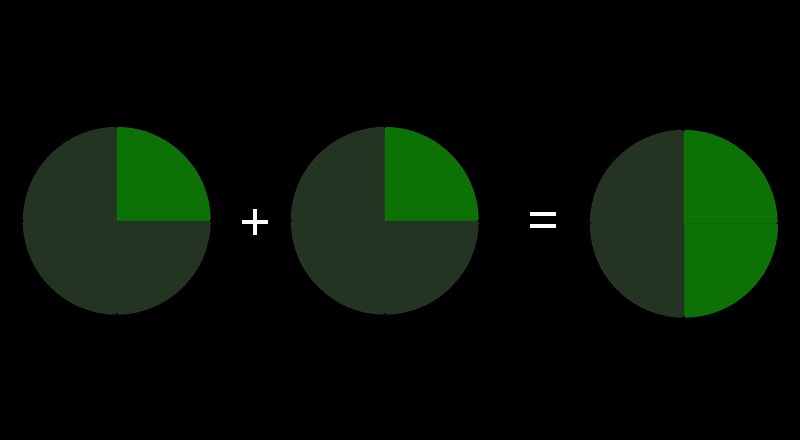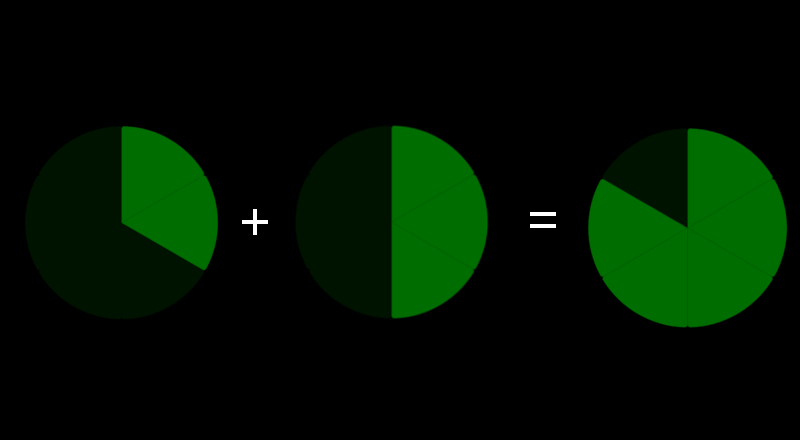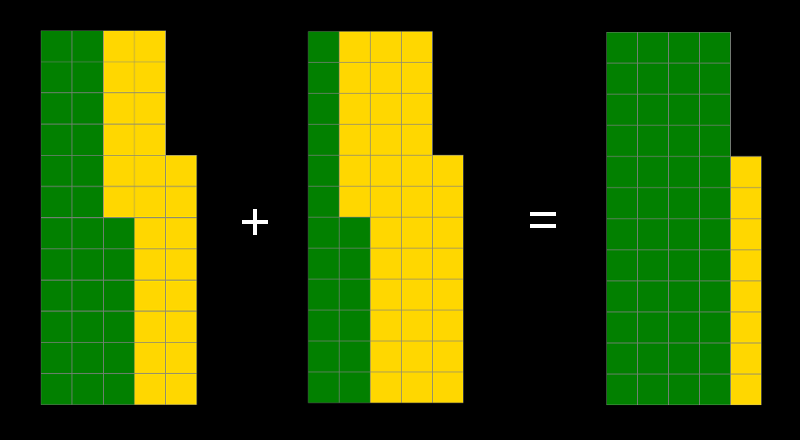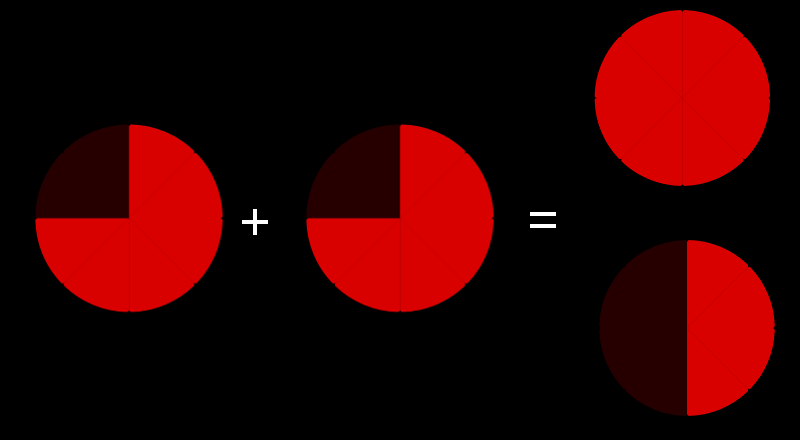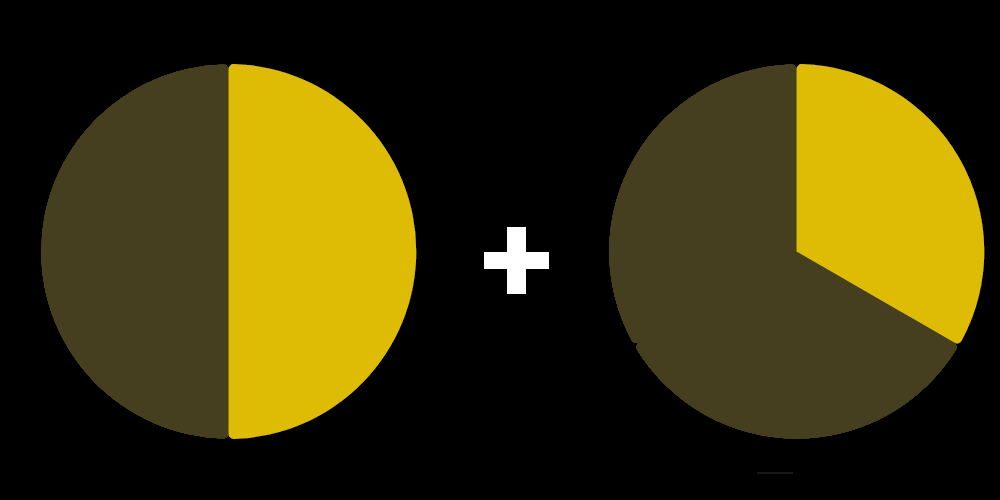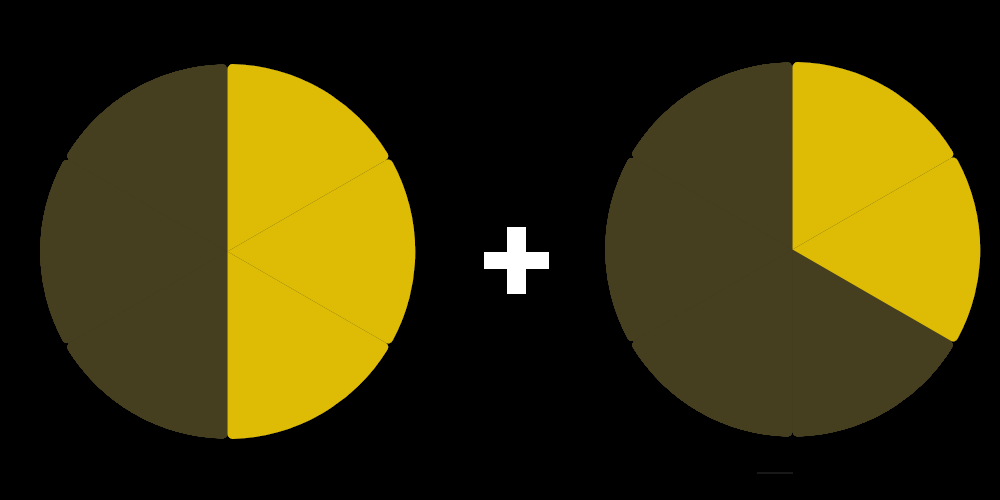Quick Access
Introduction
Adding and subtracting fractions may seem tricky at first, but if we follow a few simple steps, we will have the hang of it in no time. Nevertheless, we recommend starting with 'simplifying a fraction’ if this lesson has not been read yet ;)
After this course, we will be able, among other things, to:
1. Better understand fractions and how to manipulate them.
2. Add or subtract simple fractions.
3. Transform a fraction to an equivalent one.
4. Add or subtract fractions with different denominators.
Let’s have a quick reminder of what a fraction is and how it can be represented.
Reminder
The number above, at the numerator, represents the number of shares we take. The number below, at the denominator, represents the number of total shares.
If we multiply or divide the numerator and the denominator of a fraction by the same number: we get an equivalent fraction (equal).
We never divide by 0!
The minus sign can be moved all over the fraction: $$\frac{-a}{b}=-\frac{a}{b}=\frac{a}{-b}$$ $$\frac{-a}{-b}=\frac{a}{b}$$
The game
When fractions have the same denominators we just add or subtract the numerators and place the result over the common denominator. Then, we simplify the final fraction if needed (cf. simplifying a fraction) to keep the result as neat as possible.
Let’s see first some simple examples where denominators are the same:
Things start getting interesting when denominators are different: it happens for instance when one friend bring a pizza cut in six while we have one cut in 8. The difficulty is only about getting the same denominator.
If adding or subtracting is our aim, the bottom numbers must be the same!
When there is different denominators, there are a few different ways to change the frations to equivalent ones in order to have a common denominator. We will learn here the easiest way, then a quick trick, and finally, the traditional way.
Easiest method
For this method we only have to multiply the numerator and the denominator of each fraction by the denominator of the other; we call it cross-multiplying the fractions. Be careful though: this method may be inefficient if we are dealing with big numbers. Here is some examples:
Let's visualize our first example using pineapple pizzas to fully master the concept :)
Quick trick
This trick is the quickest way to add fractions. However, it only works in special cases: when one denominator is a multiple of the other. In such case, we only have to multiply the fraction having the smallest denominator by the multiple (good to know the multiplication tables) that reaches the other one:
Traditional method using the LCM (or LCD)
We should use this method only when we can’t use either of the other methods as it can be quite long. Unless... we get the way just by looking at the denominators thanks to some practice.
The least common multiple (or LCM) is the smallest number divisible by the two denominators. Suppose we want to add the fractions 3/6 and 12/15, we find the LCM by listing their multiples and taking the first (smallest) one they have in common:
|
|
So 30 is the LCM of 6 and 15!. We also call this number the Least Common Denominator (LCD), which is the smallest common denominator for both fractions.
Now we just have to multiply each fraction with the blue number to get the same denominator: $$\frac{3}{6} + \frac{12}{15} = \frac{3 * \pmb{5}}{6 * \pmb{5}} + \frac{12 * \pmb{2}}{15 * \pmb{2}} = \frac{15 + 24}{30} = \frac{39}{30} \quad = \quad \frac{13}{10}$$
Congratulations!
Always find the LCM with Euclide
To always find the LCM we first need to find the GCD using Euclid's algorithm. Do not panic, it's not complicated! We just need to know how to divide a number.
The procedure is as follows: - Perform the Euclidean division of the greatest number (noted a) of the fraction on the smallest number (noted b) and keep the rest (noted r). - As long as the rest is different from 0, we reiterate the division replacing a by b and b by r.
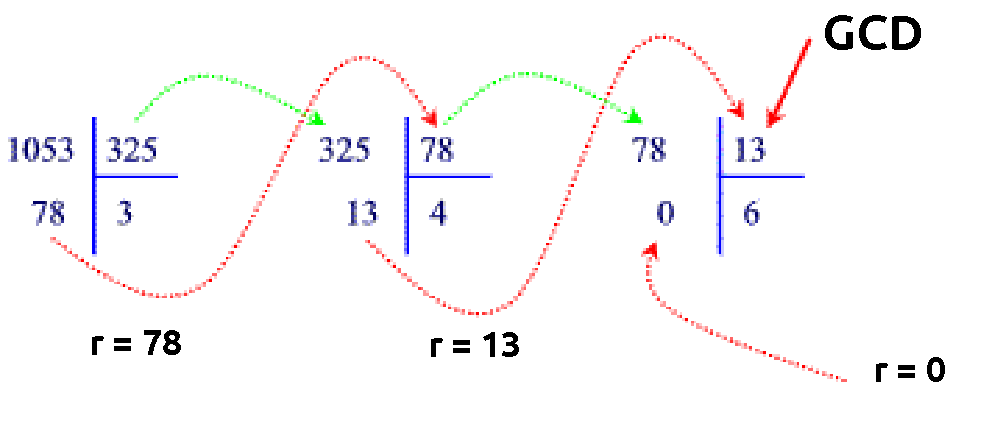
Using the GCD we can calculate the LCM using the following: $$LCM = (a * b) / GCD(a,b)$$ In our case, with 6 and 15 as denominators: $$LCM = (6 * 15) / GCD(6,15) = 90 / 3 = 30$$ Sweet... !
In brief
To add fractions there are three steps: 1. Make sure the bottom numbers (the denominators) are the same. 2. Add the top numbers (the numerators) and put that answer over the denominator. 3. Simplify the fraction if needed.
We can now add or subtract any fractions! Here is some tools if you want to get further with mastering the vast world of fractions. Feel free to use Globo and its explanations to solve your problems.
Tools - Cheatsheets
|
|

 Play online
Play online
 Step-by-step simpliflier
Step-by-step simpliflier
 Worksheets
Worksheets
